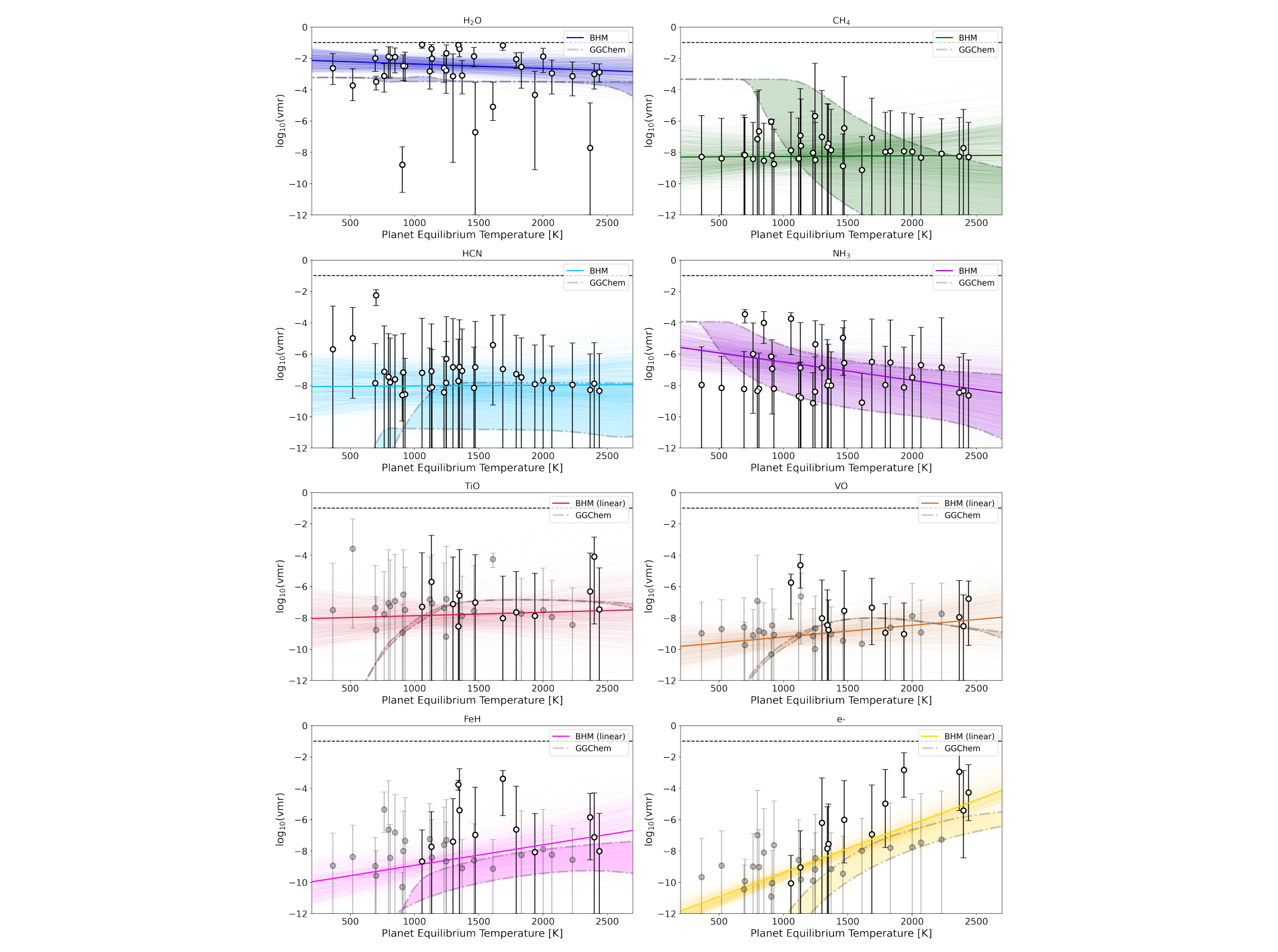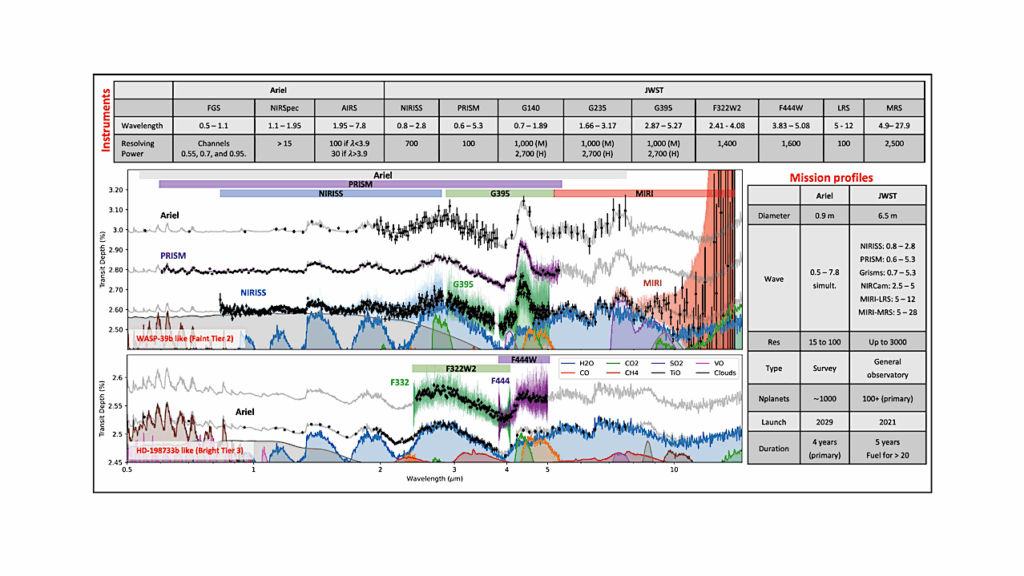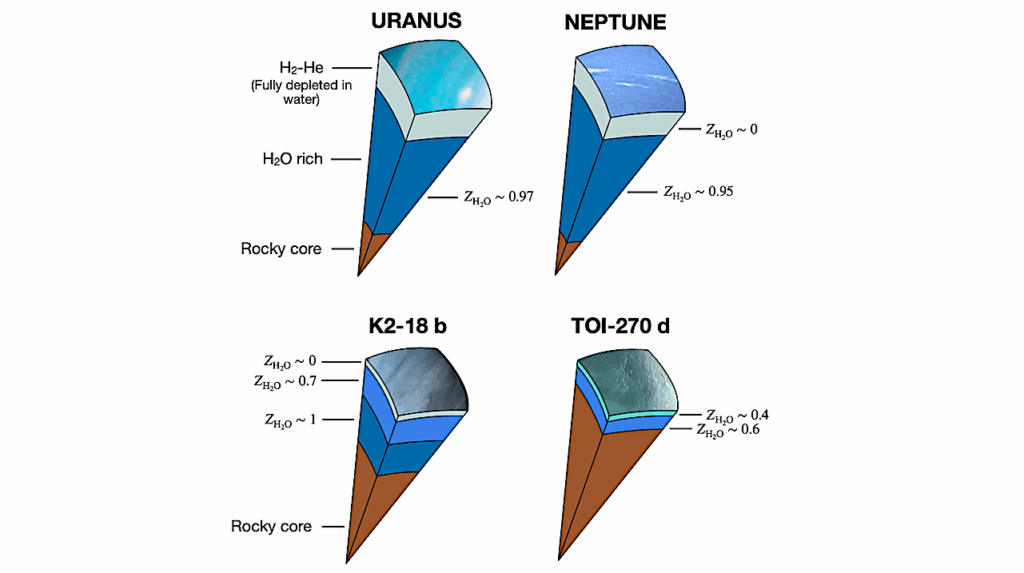Exploring the Ability of HST WFC3 G141 to Uncover Trends in Populations of Exoplanet Atmospheres Through a Homogeneous Transmission Survey of 70 Gaseous Planets

We present the analysis of the atmospheres of 70 gaseous extrasolar planets via transit spectroscopy with Hubble’s Wide Field Camera 3 (WFC3).
For over half of these, we statistically detect spectral modulation which our retrievals attribute to molecular species. Among these, we use Bayesian Hierarchical Modelling to search for chemical trends with bulk parameters. We use the extracted water abundance to infer the atmospheric metallicity and compare it to the planet’s mass.
We also run chemical equilibrium retrievals, fitting for the atmospheric metallicity directly. However, although previous studies have found evidence of a mass-metallicity trend, we find no such relation within our data. For the hotter planets within our sample, we find evidence for thermal dissociation of dihydrogen and water via the H− opacity.
We suggest that the general lack of trends seen across this population study could be due to i) the insufficient spectral coverage offered by HST WFC3 G141, ii) the lack of a simple trend across the whole population, iii) the essentially random nature of the target selection for this study or iv) a combination of all the above. We set out how we can learn from this vast dataset going forward in an attempt to ensure comparative planetology can be undertaken in the future with facilities such as JWST, Twinkle and Ariel. We conclude that a wider simultaneous spectral coverage is required as well as a more structured approach to target selection.
Billy Edwards, Quentin Changeat, Angelos Tsiaras, Kai Hou Yip, Ahmed F. Al-Refaie, Lara Anisman, Michelle F. Bieger, Amelie Gressier, Sho Shibata, Nour Skaf, Jeroen Bouwman, James Y-K. Cho, Masahiro Ikoma, Olivia Venot, Ingo Waldmann, Pierre-Olivier Lagage, Giovanna Tinetti
Comments: Accepted for publication in ApJS
Subjects: Earth and Planetary Astrophysics (astro-ph.EP)
Cite as: arXiv:2211.00649 [astro-ph.EP] (or arXiv:2211.00649v1 [astro-ph.EP] for this version)
https://doi.org/10.48550/arXiv.2211.00649
Focus to learn more
Submission history
From: Billy Edwards
[v1] Tue, 1 Nov 2022 17:10:38 UTC (77,703 KB)
https://arxiv.org/abs/2211.00649
Astrobiology








